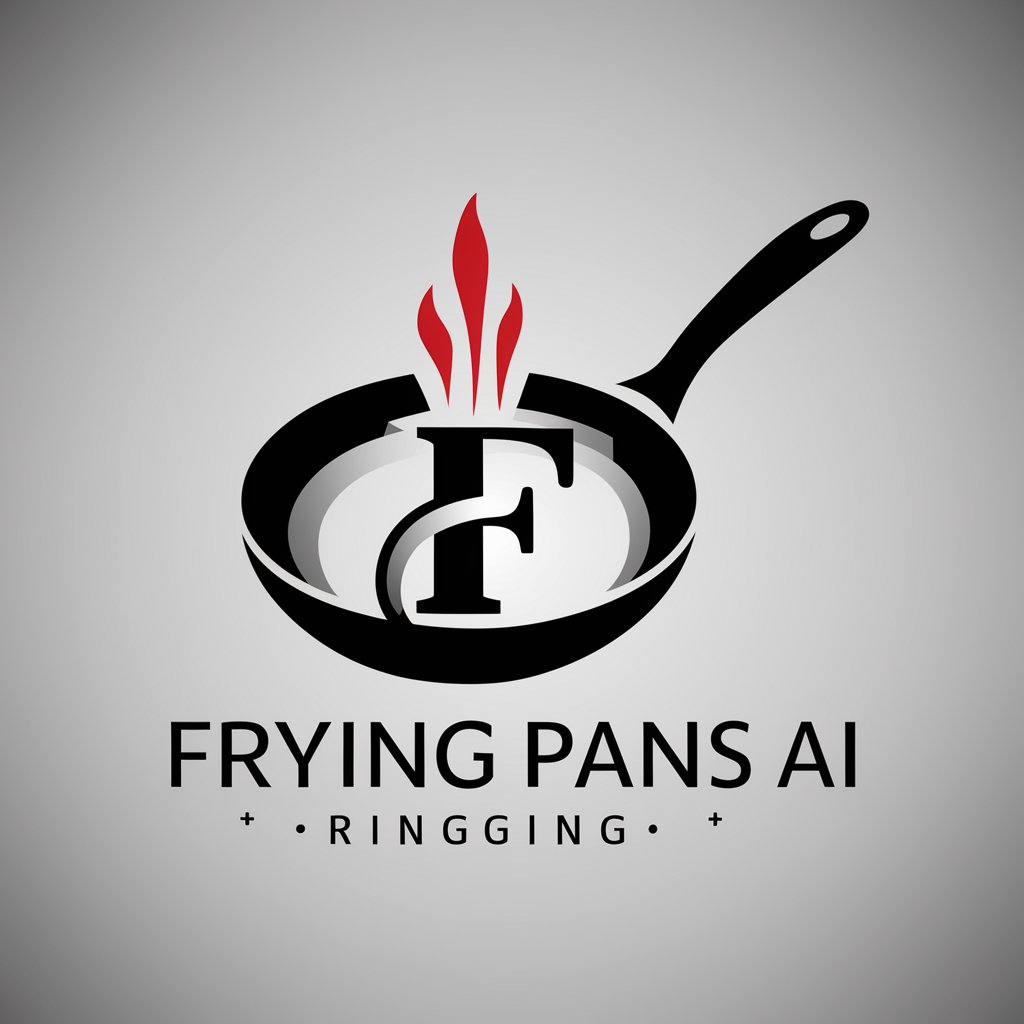Frying Pans - Culinary Pan Insights

Welcome! I'm here to help you master the art of frying pans.
Elevate Cooking with AI-Powered Pan Guidance
What are the best materials for frying pans and why?
How should I care for my cast iron frying pan?
Can you explain different frying techniques using a non-stick pan?
What are the benefits of using a carbon steel frying pan?
Get Embed Code
Introduction to Frying Pans
Frying pans, essential tools in both professional kitchens and home cooking, are designed primarily for frying, searing, and browning foods. They are characterized by their flat bottom and slightly flared or rounded edges, which allow for easy flipping, stirring, and sliding of food from pan to plate. Frying pans are made from a variety of materials including cast iron, stainless steel, non-stick coatings (like Teflon), and aluminum, each offering distinct advantages. For example, cast iron pans are celebrated for their heat retention and durability, ideal for achieving a perfect sear on steaks. Non-stick pans, on the other hand, are preferred for cooking eggs or pancakes where minimal sticking is desirable. The design of a frying pan, including its handle, thickness, and surface coating, is optimized for quick cooking methods over high heat, making it a versatile tool for a wide range of culinary applications. Powered by ChatGPT-4o。

Main Functions of Frying Pans
Frying and Searing
Example
Achieving a crispy exterior on meats or vegetables
Scenario
Using a cast iron frying pan to sear a steak on high heat, locking in juices and creating a flavorful crust.
Sautéing
Example
Quickly cooking and browning small pieces of food
Scenario
Using a stainless steel frying pan to sauté onions and garlic, providing a fragrant base for sauces or other dishes.
Pan-frying
Example
Cooking food in a moderate amount of oil at medium to high heat
Scenario
Using a non-stick frying pan to pan-fry breaded chicken cutlets, resulting in a golden, crispy coating without sticking.
Making Sauces
Example
Preparing pan sauces by deglazing the pan
Scenario
After searing meat, deglazing the frying pan with wine or broth to incorporate the flavorful browned bits into a sauce.
Ideal Users of Frying Pans
Home Cooks
Individuals who enjoy preparing a variety of dishes at home, from quick breakfasts to elaborate dinners. They benefit from the versatility and ease of use offered by frying pans, enabling them to experiment with different cooking techniques.
Professional Chefs
Culinary professionals who demand durability, heat distribution, and versatility for high-volume, diverse cooking. Frying pans meet these needs, allowing chefs to consistently produce high-quality dishes.
Culinary Students
Aspiring chefs learning the fundamentals of cooking techniques. Frying pans serve as an essential tool for practicing and mastering a wide range of dishes, from basic sautéing to complex pan sauces.
Specialty Cooks
Individuals with specific dietary preferences or needs, such as vegan or gluten-free diets. Non-stick frying pans, in particular, offer a health-conscious method for cooking with minimal fat and avoiding cross-contamination.

How to Use Frying Pans Effectively
Explore without Signing Up
Begin your culinary journey by exploring frying pan options without any commitment. Visit a platform that offers insights and trials on cooking tools without the need for signing up or subscribing to premium services.
Select the Right Material
Choose a frying pan based on its material. Common options include stainless steel for even heat distribution, non-stick for easy cleaning and delicate foods, cast iron for high heat searing, and aluminum for quick heat conduction.
Preheat Properly
Preheat your frying pan on a medium setting for a few minutes before adding oil or food. This ensures even cooking and prevents sticking, especially important for proteins like meat or fish.
Use Appropriate Techniques
Employ the right cooking techniques for your dish. Sautéing, searing, and pan-frying are common methods that utilize different heat levels and oil amounts to achieve the desired texture and flavor.
Maintain and Care
After use, clean your frying pan according to its material. Stainless steel and cast iron require different care than non-stick surfaces. Proper maintenance includes regular cleaning, seasoning cast iron, and avoiding metal utensils on non-stick coatings.
Try other advanced and practical GPTs
Atraindo Coisas Boas
Empowering insights with AI-powered tarot readings

Biblical Scholar
AI-powered Bible study and sermon preparation

Ydentiq
Empower Creativity with AI Insight

450 Bushmaster
Empowering Big Game Hunts with AI

Dust
Harness AI to Combat Dust

IBT - Technical Support
Instant tech support, powered by AI

LLC Guide
Empowering LLC Management with AI

시각화 전 데이터 전처리
Transform data into visual stories effortlessly.

Gayle - Live Stream Marketing Strategist
Elevate Your Live Streams with AI-Powered Marketing Insights

Helmut
Discover German culture with AI-powered humor

Hair
Your AI-Powered Hair Care Companion

深江 方浩
Empowering your creativity with AI

Frying Pans FAQ
What is the best way to season a cast iron frying pan?
Seasoning cast iron involves coating it with a thin layer of oil and baking it at a high temperature. This process creates a natural, non-stick surface and prevents rust. After cleaning the pan, apply a thin layer of vegetable oil and heat it in the oven at 375°F (190°C) for an hour.
Can non-stick frying pans go in the oven?
Non-stick frying pans can go in the oven, but it's essential to check the manufacturer's maximum temperature rating. Generally, temperatures above 350°F (175°C) could damage the non-stick coating or handle, depending on the pan's materials.
How do I prevent food from sticking to stainless steel frying pans?
To prevent food from sticking to stainless steel, preheat the pan over medium heat, then add oil and allow it to heat until shimmering. This creates a temporary non-stick surface. Also, ensure the food is dry and not too cold when it hits the pan.
Why is my frying pan warping?
Warping can occur if a frying pan is exposed to rapid temperature changes or overheated. It's more common in pans made of thin materials. To prevent warping, avoid placing a hot pan under cold water and use moderate heat levels.
How often should I replace my frying pan?
The lifespan of a frying pan depends on its material, usage, and care. Non-stick pans typically last 3-5 years with regular use, while well-maintained stainless steel and cast iron pans can last decades. Replace when you notice deterioration in performance or damage to the cooking surface.
